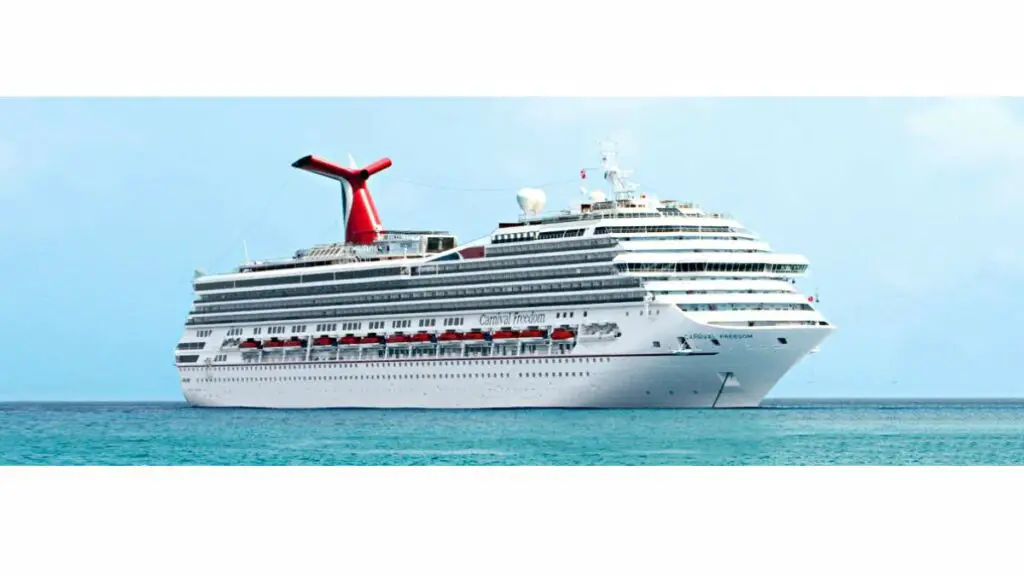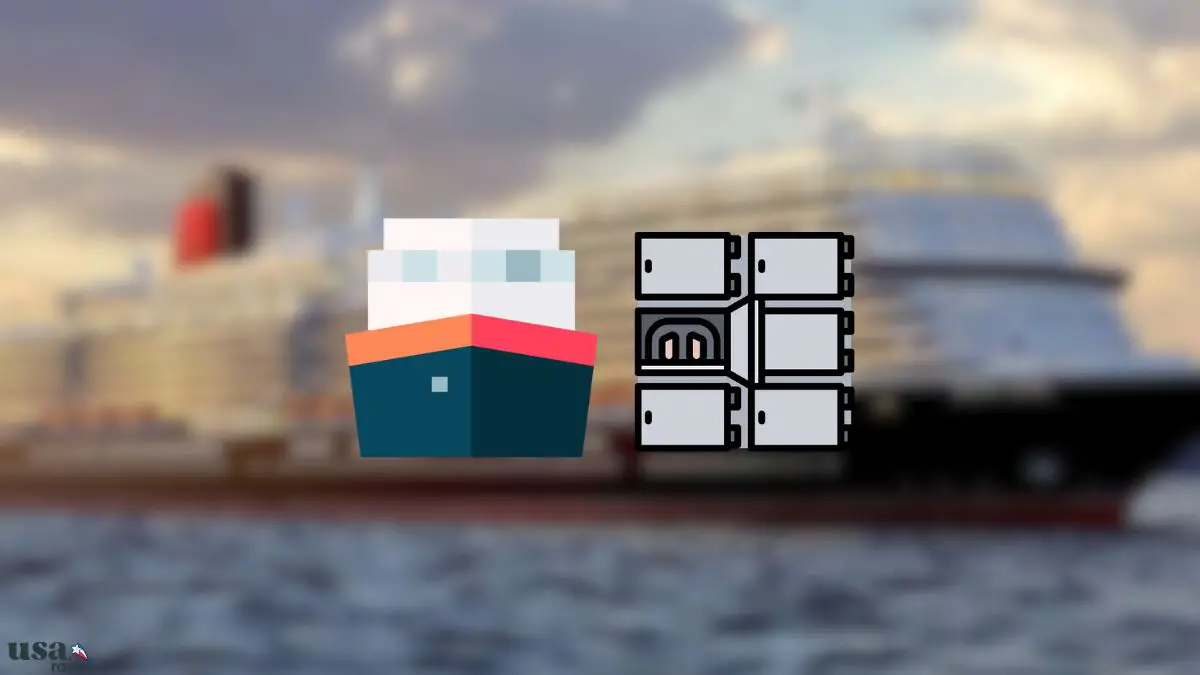Cruise ships are like floating cities, with thousands of passengers enjoying amenities like restaurants, pools, casinos, and entertainment. But just like on land, people sometimes die at sea.
This raises an interesting question – do cruise ships have morgues on board?
The short answer is yes. Cruise ships are required by maritime law to have basic medical facilities, including a morgue.
The morgue allows a ship to properly store a deceased person until the ship can reach a port and the remains can be removed.
Let’s take a closer look at how morgues work on cruise ships. We’ll examine the regulations that mandate them, where they are typically located, how many bodies they can hold, and what happens when someone passes away at sea.
Cruise ships have carefully planned procedures to handle these sensitive situations with discretion and respect.
While a morgue may seem like a grim necessity, it’s a vital facility that allows cruise lines to operate in a safe and lawful manner.
So let’s step inside this rarely-seen part of a cruise ship’s anatomy.

Is There a Morgue on Cruise Ship?
Most large cruise ships have a small morgue or mortuary on board. The purpose of the morgue is to temporarily store bodies in the unfortunate event that a passenger dies during a cruise.
This allows the cruise ship to keep the deceased person on board until the body can be properly returned to land.
The morgue on a cruise ship is typically quite small, often about the size of a large closet or small room. It is not designed to hold more than one or two bodies at a time, as a larger morgue would take up valuable space needed for passenger amenities.
At first, people may wonder about the need for a morgue on a cruise but it is necessary, similar to a brig or jail.
Where is the morgue on a cruise ship?
The morgue is usually located out of the way from main passenger areas, often on one of the lower decks of the ship without windows. This provides privacy and reduces the chance of passengers accidentally encountering the morgue.
Inside the morgue, there are cold storage units or refrigerated drawers to preserve bodies until the ship reaches the next port. Access to the morgue is restricted only to authorized medical personnel and officers due to the sensitive nature. It is kept locked.
What does the morgue look like on a cruise ship?
The morgue on a cruise ship is a very small, clinical room located out of the way from main passenger areas, often on a lower service deck without windows. This provides privacy from curious passengers.

The morgue is typically about the size of a large walk-in closet or small bedroom — just large enough to hold one or two bodies at a time.
Access to the morgue is tightly controlled, with the door kept locked and only authorized medical and security staff allowed entry.
There is no chance of accidental visitor entry.
Inside, the morgue has plain sterile walls and floors, with stainless steel or tile surfaces for easy cleaning.
The lighting is bright fluorescent to allow clear visibility when working. Powerful ventilation and cooling systems preserve bodies and prevent odors.
For storage, there are stainless steel refrigerated compartments or pull-out cold drawers to contain bodies. Basic embalming tools, cleaning supplies, body bags, and personal protective equipment are also kept for handling deceased persons.
The morgue may contain a small counter area, sink, and supply storage cabinets.
While clinical and somber in feel, the morgue allows bodies to be safely contained with proper respect until arrangements can be made at the next port.
What do cruise ships do if someone dies?
The ship’s medical staff will be called immediately to confirm the death and document the time and suspected cause.
The body will be respectfully removed from the passenger’s cabin and transported to the ship’s morgue. It will be stored there in refrigeration until arrival at the next port.
The deceased’s family will be notified, usually via the emergency contact info provided when booking. The cruise line will assist with any necessary arrangements.
Prior to arriving at the next port, the ship’s staff will contact relevant authorities such as customs officials and the local morgue to arrange for body disembarkation.
When able, the body will be unloaded from the ship in a discreet, respectful manner. It will then be transferred to a local funeral home or morgue chosen by the family.
If autopsy or investigation is required, local authorities at the port will handle. They may temporarily take custody of the body.
The stateroom where the death occurred will be thoroughly cleaned and sanitized. Any neighboring rooms affected will also be addressed.
Counseling services may be offered to those traveling with the deceased or any crew/passengers deeply affected by the event.
The cruise ship will assist the deceased’s family as reasonably possible with travel, lodging or other logistics during this difficult time.
Though a tragedy, the ship’s staff is trained to respond sensitively and efficiently. Proper facilities like the onboard morgue and established protocols allow the cruise line to make necessary arrangements while still continuing voyage.
How Often Do People Die On Cruise Ships?

Though large numbers of passengers cruise every year, deaths during cruises are actually quite rare events statistically.
A study shows over 600 people died on cruise ships from 2000 to 2019.
Approximately 200 passengers total die while on a cruise each year, considering over 20 million cruise passengers worldwide. The vast majority of these deaths are due to natural causes, often heart attacks or other medical emergencies.
Travel insurance data suggests about three-quarters of cruise ship deaths are from expected natural causes.
Only 30-40 deaths per year are from unnatural causes like accidents, suicides or homicide.
Given about 200 deaths annually among 20 million cruise passengers, the death rate is approximately 1 in 100,000 passengers.
For comparison, the annual death rate in the general US population is about 8 in 1,000 people. So statistically, cruising is far safer than everyday life.
Certain higher-risk demographics, like elderly travelers, do have elevated mortality rates on par with their natural risks. But for most passengers, dying during a cruise is extremely unlikely.
Certain cruise lines focus specifically on seniors over 60.
Causes of Death on Cruise Ships
| Cause of Death | Description |
|---|---|
| Natural Causes | The leading cause is death by natural causes, often heart attacks, strokes, aneurysms or other sudden medical emergencies. Accounts for approximately 75% of cruise ship deaths. Older passengers are at higher risk. |
| Accidents | Deadly accidents can occur, such as drowning, falls overboard, injuries from elevators/escalators, excursion mishaps, or traffic accidents in port. Account for around 15-20% of deaths. |
| Suicide | Jumping overboard intentionally does occur in some tragic cases. Stress, depression or anxiety while cruising can rarely lead to suicide. |
| Medical Complications | Death during medical disembarkation for an existing condition or from improper treatment in the ship’s hospital. |
| Crime | Homicide, while extremely rare, can happen as well as deadly assaults or robbery in ports. |
| Disappearances | It is not uncommon for passengers who go missing on board to be presumed dead, though bodies are not recovered. |
| Alcohol/Drugs | Overdoses or accidents resulting from excessive alcohol/drugs contribute to some cruise deaths. |
| Norovirus | Extremely rare, but norovirus or other outbreaks have caused deaths in sensitive individuals. |
What is the Code for Death on a Cruise Ship?
When a passenger death occurs on a cruise ship, the crew uses coded language to discretely communicate the situation. There are a few different codes used:
- Code Alpha – This is the most common code used to indicate a passenger death. “Code Alpha” will be paged to alert relevant security, medical, and executive staff.
- Code Oscar – Some cruise lines use “Code Oscar” rather than “Code Alpha” to signal a death. “Oscar” stands for “man overboard” which is a procedure crews practice.
- Code Bravo – For a death involving crime or foul play, “Code Bravo” may be paged instead of Alpha or Oscar to indicate it is an open investigation.
- Code Red or Ruby – These codes indicate a serious medical emergency that may result in a passenger death. Staff will rush to respond.
- 300 – Calling “300” over the PA system is another way to subtly announce a body needs to be moved to the morgue.
- Operation Bright Star – This is a code phrase for covert body transport if discretion is especially necessary.
The coded language allows cruise staff to respond promptly and discreetly without alarming other passengers, especially for sudden deaths that need to be handled with sensitivity.
Proper coded communication ensures the ship’s well-trained staff is ready to manage any situation professionally.
Frequently Asked Questions
Do Cruise Ships Have Morgues Onboard?
Yes, most large cruise ships have a small morgue or mortuary facility onboard. This allows them to handle passenger deaths discreetly when they occur.
Why Do Cruise Ships Need Morgues?
Having an onboard morgue allows a cruise ship to safely store a deceased passenger until proper arrangements can be made at the next port. It is far more dignified than improvised storage and allows the ship to continue sailing.
Where Are Morgues Located on Ships?
The morgue is typically located on a lower service deck, out of the way from main passenger areas. This provides privacy and reduces the chance of accidental discovery.
What Do Cruise Ship Morgues Look Like?
Ship morgues are small sterile rooms with refrigerator units to store 1-2 bodies. They have stainless steel surfaces for easy cleaning and powerful ventilation. Access is tightly controlled.
How Often Are Cruise Ship Morgues Used?
Thankfully not very often. Approximately 200 people die across all cruises worldwide per year. So for any one ship, usage is very rare.
What If the Morgue is Full?
In the unlikely event the morgue is fully occupied, the crew has contingency plans to use other refrigerated spaces or even cabins to hold bodies respectfully.
How Are Bodies Removed from the Ship?
Discreetly. Port authorities assist with customs clearance and transfer to a local funeral home or morgue arranged by the deceased’s family.
Does a Death Disrupt the Cruise?
Very minimally. The ship still continues its planned itinerary. Any small disruptions are handled sensitively by the well-trained crew.
What’s Next?
Thankfully, the morgue is not commonly used on cruises. But it provides necessary facilities in the rare case of a passenger death, allowing the cruise line to properly manage the body on board rather than storing it in a makeshift area.
So while not a pleasant topic, the morgue is an essential space for handling these situations with dignity if the tragedy of a passenger death occurs.

